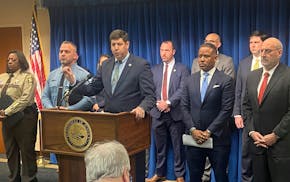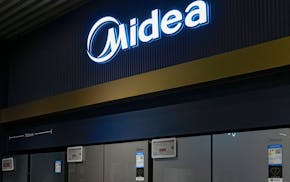School maintenance staff across Minnesota have a new task on their to-do list: Report to the state the levels of lead in school drinking water.
Since 2018, Minnesota has required its schools to test for lead at least once every five years. But until an update made in the 2023 legislative session, there was no requirement that school officials report the test results to the state and no threshold for the amount of lead that requires action. The new standard, which took effect in July, requires districts to report test results and remediation efforts to the state.
Schools are now required to remedy within 30 days any faucet with lead levels higher than five parts per billion — the limit set by the Food and Drug Administration for bottled water — or else directly notify families of test results. Districts have five years to test all of their buildings and get levels under that threshold. By law, a school is not financially responsible for remediation if high lead levels are caused by lead pipes owned by a public water supply utility.
Before the updated mandates, "there wasn't a whole lot of guidance for schools on when they take action," said Anna Schliep, lead drinking water coordinator at the Minnesota Department of Health.
There is no safe level of lead, a dangerous neurotoxin that can cause mental and physical development problems in children, according to EPA. The metal is found in older water pipes, plumbing fixtures and even in the soldering that connects piping.
The Biden administration has attempted to tackle the problem by making water systems map lead service lines — or pipes on private property that connect homes and businesses to public water supplies. Minnesota, meanwhile, committed $240 million last year to help replace those lead service lines and is collecting information on lead pipes in a statewide map. The state Department of Health plans to create a similar map later this year showing lead levels at schools and childcare centers across the state.
Checking old plumbing
St. Paul Public Schools has more than 6,500 water taps across the district. Though district staff have been regularly sampling water since 2009, efforts ramped up this year, said Brian Bergstrom, the district's environmental specialist. He aims to test lead levels in two buildings per month — a schedule that will ensure all taps in each of St. Paul's 74 buildings are tested within the five-year timeframe required by the state.
"We don't just want to meet this new number because it's the new number," he said. "We want to use this as the justification to take a holistic look at our aging infrastructure in a lot of our older buildings."
Earlier this year, the district hired a plumber to replace fixtures with high lead levels. If a tap shows lead levels above five parts per billion, the water is shut off and a work order is put in, Bergstrom said. St. Paul schools facilities staff also aims to install additional filtered water fountains in buildings, for which the state offers grant money.
In Fridley schools, maintenance staff recently conducted an audit of each water fixture and implemented a schedule for custodians to flush the plumbing. The state Department of Health recommends running water through pipes to clear any stagnant supply after school breaks stretching longer than a week.
"We want this to be the last worry for our families and want them to know we're on top of things," said Rochelle Cox, senior officer of operations for Fridley schools. She added that testing reports and monitoring plans are available on the district website.
Jim Muenzenmeyer, buildings and grounds director for Eastern Carver County schools said the district's previous threshold was 20 parts per billion.
"We had no problem getting to that," he said, adding that bringing all the district's drinking water below the new standard will be "fairly easy" but take more staff time.
Some of the highest readings are in "low-flow situations" — sinks in unused corners of older schools, like in a long-shuttered dark room once used to develop film, Muenzenmeyer said. Those taps may require a more frequent flushing schedule or removal if they are no longer needed, he said.
"We realize the importance of this," he said. "Everyone wants clean water for our kids."

Five members of Minneapolis Highs street gang found guilty of racketeering conspiracy

Midea recalling 1.7 million of its popular air conditioners due to mold concern

Social media, text chains helped anti-ICE protesters get the word out during Minneapolis raid

TSA agents seize two loaded guns on the same day at MSP Airport

